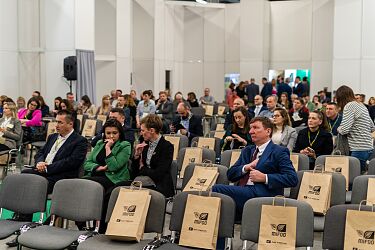News

Low-temperature metals recovery from printed circuit boards discussed at the meeting organised by NataLab
The electronic waste problem also pertains to printed circuit boards. This topic has still been on the priority list of environmental issues for years. We generate huge amounts of electronic waste, which is caused by the short life cycle of products and the pursuit of modernity. We often replace devices not because of wear and tear, but because of new possibilities offered by even later models.
Electronic device waste often ends up in "lower legal cultures" countries, such as Cameroon or Bangladesh, as they do not have stringent environmental regulations that limit the processing of metals. Processing involves many people’s work, who are exposed to harmful compounds causing cancer. This danger significantly increases mortality.
Therefore, the NataLab decided to respond to the question of electronic waste; - the conclusions are not optimistic. A completely ecological method of recycling printed circuit boards has not yet been invented. However, there is a way to reduce the harmful impact of processing of this waste type.
The NataLab proposal is based on reversing the process order, which prevents the formation of harmful compounds at further stages. The method involves removal of harmful substances and transferring the "purified" product for further processing.
The process consists of three steps: gasification - a long-known and widely used method, catalytic reaction - oxidation of gasiffied substances, and follow-up control.
The technological advantages of the NataLab proposal - the method does not require grinding, freezing or the use of centrifuges. Furthermore, the process takes place at a low temperature - up to 600 degrees allowing the use of traditional sheet metal. Another advantage is the lack of nitrogen oxide emissions. Moreover, the NataLab technology focuses on solid products - metals, minerals and glass fibre. Pyrolytic tar, dust, alkaline sludge and other solid substances released in other technologies require disposal. NataLab method does not produce the harmful substances.
The ideal recycling method has not yet been invented, but the proposals from the market are a clear signal that we have assumed the right direction - the use of modern technologies in pro-ecological activities. Undoubtedly, it is worth focusing on prevention - generating less waste is the best way to reduce its harmfulness to the environment.








